Complete Guide to Choosing Wing Foiling Packages
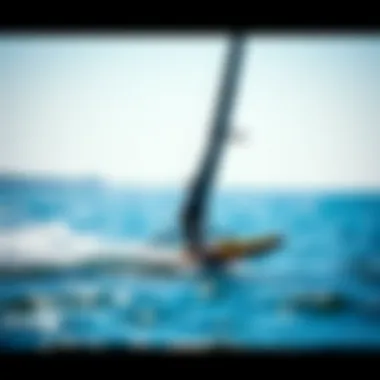
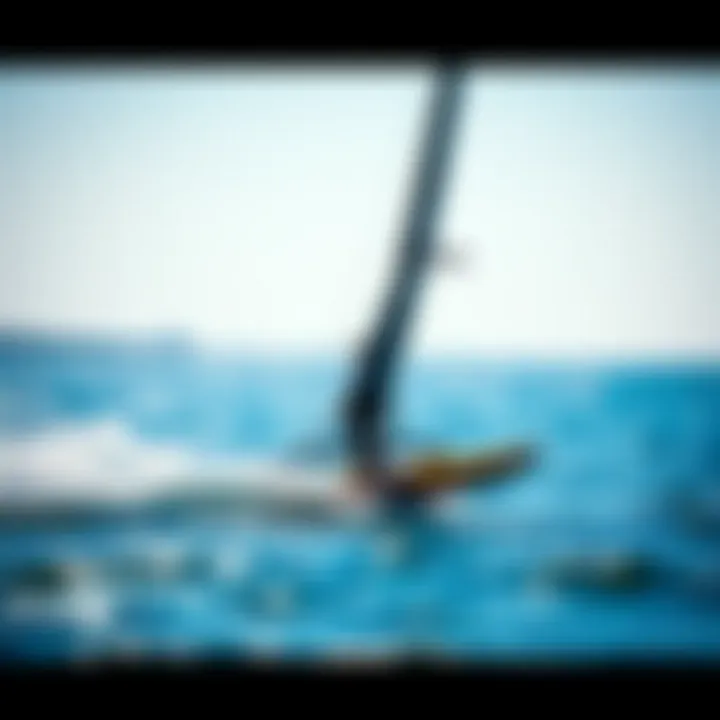
Intro
Wing foiling has taken the watersport community by storm, merging elements of both windsurfing and kitesurfing. As a beginner or a seasoned pro, understanding how to navigate the diverse landscape of wing foiling packages is crucial. Whether it’s the type of board you choose or the wings you couple with it, every decision impacts your experience on the water. Navigating this landscape may seem akin to finding a needle in a haystack, but that’s why this guide is here.
In this guide, we'll break down the essentials of wing foiling packages to help you get the most out of your time spent on the water. Expect to see a thorough examination of gear selection, skill development, and expert tips that will elevate your performance. Plus, we’ll delve into various brands and accessories that can enhance your wing foiling adventure, providing you with a roadmap to make informed purchases.
Let’s dive in and explore the technical aspects that make wing foiling both exhilarating and accessible for everyone from kiteboarders to instructors. Understanding these fundamentals can be your ticket to enjoying this dynamic and increasingly popular sport.
Understanding Wing Foiling
Wing foiling is a relatively new water sport that has quickly garnered attention for its blend of windsurfing, surfing, and kitesurfing. It is essential for anyone looking to dive into this exhilarating activity to grasp its fundamentals. Understanding wing foiling not only enhances safety but also boosts enjoyment, allowing enthusiasts to develop smoother techniques and maneuvers on the water.
Definition and Evolution
Wing foiling combines aspects of windsurfing and foiling with the innovative addition of a wing, a lightweight, hand-held sail that catches the wind, propelling the rider across the water's surface. This sport has its roots in traditional windsurfing, but the introduction of the hydrofoil—an underwater wing that lifts the board above the water—has transformed how riders interact with the elements.
Historically, wing foiling began to take shape in the late 2010s. Early adopters were typically kiteboarders or windsurfers eager for a new challenge. As the technology improved, more users found themselves drawn to it. Today, there are plenty of options available, making it accessible to both novices and seasoned riders alike. The community continues to grow, with competitions and events popping up around the globe.
The beauty of wing foiling lies in its versatility. It’s possible to enjoy the sport on various water conditions, from flat lakes to choppy ocean waves, which has contributed to its rapid rise in popularity.
Basic Principles of Wing Foiling
Getting the hang of wing foiling involves considering several basic principles. It generally encompasses balance, control, and the understanding of wind dynamics. Here’s a snapshot of the core principles:
- Balance: Maintaining your center of gravity is crucial. The rider must learn to stand evenly on the board while using their arms to control the wing.
- Control: Steering with the wing requires practice; pivoting and adjusting leverage can drastically change speed and direction.
- Wind Dynamics: Understanding how the wind interacts with the wing and the water can dictate your performance, especially with regard to lift and drag. Knowing which way the wind is blowing helps riders make more informed choices.
Ultimately, wing foiling is not just about riding the wind—it’s about understanding it, adapting to the environment, and finding joy in the ride. Learning these principles lays a solid foundation for each adventure on the water.
Components of a Wing Foiling Package
When it comes to wing foiling, the importance of selecting the right components can't be overstated. Each piece of equipment plays a crucial role in how well you can perform, and it’s pivotal to marry your skills and preferences with the proper gear. Whether you're looking for speed or stability, understanding the components of a wing foiling package can greatly enhance your experience on the water. This section goes into depth about the key elements that constitute a comprehensive wing foiling package and what to consider during your selection process.
Wings
Shapes and Sizes
The shapes and sizes of wings are central to the dynamics of wing foiling. A wing's aspect ratio, which is the ratio of its span to its width, affects its performance significantly. For instance, a wing with a higher aspect ratio is generally more efficient for speed but can be trickier to control for beginners. Conversely, a wide wing provides stability and is often the go-to for newcomers still finding their balance on the board.
- Key Characteristics: High aspect ratio wings are ideal for advanced riders aiming for speed, while lower aspect ratio wings are favored for beginners due to their stability.
- Unique Feature: The broader wings help with lift, making them a popular choice for casual riders looking to socialize rather than speed race.
- Advantages/Disadvantages: Choose a wider wing for a healthier learning curve, but bear in mind that a higher aspect may yield better performance for experienced riders.
Material Considerations
When it comes down to material considerations, the choice of fabric and construction technique can make a significant difference. Most wings are made from materials like ripstop nylon or mylar, which provide an excellent balance of durability and weight. Some wings even employ double-layer designs for enhanced strength.
- Key Characteristics: Lightweight wings enhance performance, but materials must be strong enough to resist wear and tear over time.
- Unique Feature: The use of higher quality materials may add a premium feel for those who want durability without sacrificing performance.
- Advantages/Disadvantages: While a high-end fabric may increase costs, it usually leads to a more enjoyable riding experience due to reduced drag and better lift.
Inflatable vs. Rigid
The choice between inflatable and rigid wings is of significant importance, especially for those new to wing foiling. Inflatable wings tend to be easier to transport and provide a softer approach that some find more forgiving. Rigid wings, on the other hand, typically offer better control and performance at higher speeds.
- Key Characteristics: Inflatable wings are lighter and can be packed away compactly, making them travel-friendly.
- Unique Feature: Rigid wings often provide sharper turns and better efficiency when foiling at speed.
- Advantages/Disadvantages: Opt for inflatables if you're concerned about storage and convenience, but be prepared for the fact that they may not perform as well in a choppy sea compared to rigid options.
Boards
Types of Boards
Different types of boards play a significant role in how you interact with the water. You’ll find options such as traditional boards designed for surfing, or dedicated foil boards which are typically smaller and lighter.
- Key Characteristics: The right board type aids in maneuverability and overall performance.
- Unique Feature: Foil boards often come with a higher rocker to help with lift during take-off.
- Advantages/Disadvantages: While traditional boards may offer a more familiar feel to a surfer, foil boards are purpose-built for wing foiling and provide enhanced performance in the air.
Volume and Dimensions
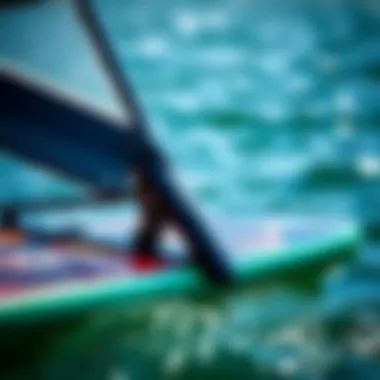
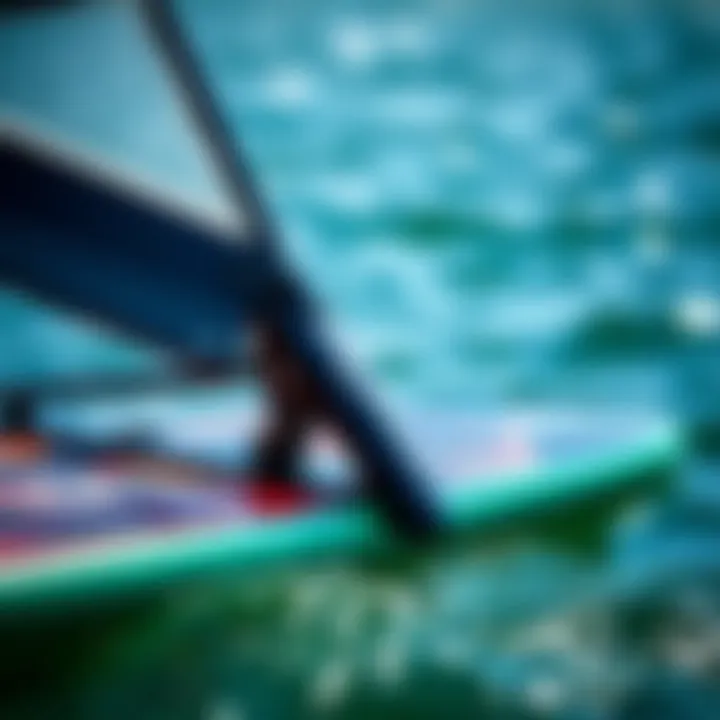
Understanding the volume and dimensions is essential for selecting the right board. Volume can determine how stable a board is, especially for beginners. Typically, a larger board will provide more buoyancy, which translates to easier take-offs and landings.
- Key Characteristics: A board with greater volume allows for smooth rides, but may weigh you down if you’re not careful.
- Unique Feature: Dimensions significantly impact how a rider experiences their time on the water, with longer boards offering stability while shorter boards enhance maneuverability.
- Advantages/Disadvantages: Larger boards are great for beginners but can limit advanced techniques.
Construction Materials
The construction materials of a board affect its performance and durability. Most foiling boards are constructed from foam and have a fiberglass or carbon finish, providing a good strength-to-weight ratio.
- Key Characteristics: The method of board construction can also impact its flexibility, dictating how it responds in the water.
- Unique Feature: Carbon boards are lightweight and efficient, allowing for easy maneuverability.
- Advantages/Disadvantages: While carbon boards come at a premium price, they often offer superior performance that serious riders seek.
Foil Systems
Different Foil Types
Different foil types are crucial to the success of your wing foiling experience. They come in various shapes and sizes, with different foil designs aimed at specific riding styles such as freeride, freestyle, or downwind racing.
- Key Characteristics: Each foil is designed for a specific purpose, impacting lift and drag characteristics substantially.
- Unique Feature: Freeride foils offer an ideal compromise between speed and stability.
- Advantages/Disadvantages: Understanding your own riding style will guide you to the right foil type; too much lift could hinder performance while a foil that's too small can be inefficient.
Assessment of Lift vs. Drag
The assessment of lift vs. drag is fundamental to wing foiling. Knowing how to balance these two forces affects everything from stability to speed. Foils that generate adequate lift can easily send riders into the air, but they must be balanced against drag to maximize efficiency.
- Key Characteristics: An ideal foil should create sufficient lift to allow easy take-off while minimizing drag to maintain speed.
- Unique Feature: Advanced wings can provide remarkable lift characteristics while reducing the resistance experienced in the water.
- Advantages/Disadvantages: An optimal balance can enhance your experience but can be tricky to find initially as different conditions may demand different approaches.
Component Compatibility
When piecing together your gear, component compatibility is non-negotiable. Each wing, board, and foil must work well together to create a seamless riding experience. Mismatched components can lead to poor performance, even if they are high-quality items.
- Key Characteristics: Ensure that the foil matches the board size and wing strength required for a given riding style.
- Unique Feature: Compatibility can lead to greater versatility in riding styles and surfing conditions when set up properly.
- Advantages/Disadvantages: Taking time to understand your gear’s compatibility can save money in the long term by avoiding mispurchases.
Choosing the right components in a wing foiling package can significantly shape your experience. From the framework of your board to the engineering of your foil, each element affects your ability to thrive in this sport, whether you're an aspiring beginner or an experienced rider.
Selecting the Right Wing Foiling Package
Choosing the right wing foiling package is crucial for both newcomers and seasoned riders. A well-suited package not only enhances performance but also improves safety and enjoyment on the water. When considering a wing foiling setup, several factors come into play—from matching the equipment to the rider's skill level to understanding the nuances of different brands.
Skill Level Appropriateness
Beginners' Needs
For a beginner, finding the right equipment is like making sure you have the right map before setting out on a journey. Newcomers typically benefit from wider wings and more stable boards, which facilitate easier control. A broader wing surface area generally provides enhanced stability and lift at lower speeds. This feature is significant because it allows beginners to get accustomed to the mechanics of wing foiling without the anxiety of losing balance.
However, the flip side is that larger wings can be less maneuverable in high winds, possibly discouraging more adventurous riders early on. Therefore, while these aspects cater well to beginners, it is also essential to educate newcomers about transitioning to smaller or more performance-based wings once their skills evolve.
Intermediate Choices
Intermediate riders are in a peculiar situation—like having one foot in each side of the door. They often seek equipment that offers both stability and the ability to explore more dynamic riding styles. Typically, intermediate gear includes mid-sized wings and boards that strike a balance between agility and ease of use.
These setups often come with unique features like adjustable cuffs and modular designs. Such flexibility is advantageous as it allows riders to tweak their equipment based on specific conditions or styles, helping them develop their skills further. However, it's essential to note that choosing the wrong size wing or board can hinder performance and growth during this pivotal stage.
Advanced Gear Considerations
For advanced riders, the equipment selection shifts from basic functionality to specialized performance. These individuals often demand greater responsiveness and speed. High-performance wings designed for slick maneuvers in challenging wind conditions become vital. Each carbon or composite material used in the construction of the wing can significantly impact the performance in noticeables ways, such as lift capacity and drag reduction.
One exciting aspect of this level of gear is its lighter weight, which makes it easier to manage in the air. However, this can come with trade-offs concerning durability. Often, advanced gear may be more fragile requiring careful handling—this is important for veterans who usually push their limits on the water.
Brand Comparisons
Top Brands in the Market
When diving into the myriad options, understanding which brands stand out can save time and money. Well-respected brands often provide well-engineered products that hold consistent quality. Several companies, like Duotone and Naish, focus on innovation, creating wings that appeal to varying skill levels. Seeking out the known brands can result in reliable performance.
However, it is equally essential to consider how a brand's reputation aligns with individual needs. A popular brand may come with a higher price tag that doesn't necessarily equate to enhanced performance.


Value vs. Price
While it may be tempting to chase after the flashiest brands, understanding the difference between value and price is a game changer. "Value" encompasses the overall quality and performance you receive relative to what you pay. Some more affordable models may actually outperform pricey counterparts under specific conditions, making certain choices more prudent for those looking to maximize their investment.
Finding brands that balance quality with cost can often mean the difference between a fruitful ride and a frustrating experience. It's worth taking notes on what suits personal needs rather than what is simply popular among others.
Customer Feedback and Reviews
When narrowing down options, customer feedback plays a pivotal role. Genuine reviews provide real-world insights into equipment performance and durability. Engaging with communities on platforms like Facebook and Reddit can yield recommendations spilling from personal experiences.
However, discerning the valuable feedback that focuses on long-term use over initial impressions is essential. Reviews help prevent common pitfalls that could sour the riding experience, ensuring you make a well-informed decision about your gear.
Package Deals vs. Individual Purchases
The decision between buying a complete package or a la carte components often stirs debate among enthusiasts. A complete package typically brings all the necessary equipment at a discounted rate compared to purchasing each part separately. This route is often safer for novices who might benefit from the guidance of simple plug-and-play options.
On the other hand, seasoned riders may find customization crucial for their performance needs. Building a setup piece by piece can also allow for adjustments tailored to specific riding styles or conditions. Ultimately, the choice comes down to prioritizing convenience versus personalization based on experience and comfort.
Accessories for Wing Foiling
When engaging in wing foiling, the right accessories are not just optional, they often make a world of difference. These components can enhance safety, increase convenience, and ultimately improve the overall experience on the water. Good accessories can empower both beginner and seasoned riders, providing peace of mind while pushing the limits of the sport.
Safety Gear
Wetsuits and Impact Vests
Wetsuits are not merely about keeping warm; they serve mutliple purposes that enhance safety and comfort in the water. A good wetsuit offers insulation, maintaining your body temperature in chilly waters. Additionally, many riders opt for impact vests as they protect against hard falls which can happen from time to time. The flexibility of wetsuits allows for easy movement, while impact vests add a layer of cushioning against impacts, making them a practical choice for anyone venturing into wing foiling.
Key Characteristics of wetsuits include various thickness options, ensuring suitable protection for different water temperatures. Likewise, impact vests are generally lightweight and designed to fit snugly, which minimizes their bulk during use, making them comfortable for extended periods in the water. However, they may be less effective in terms of warmth in colder environments compared to thicker wetsuits.
Helmets and Safety Leashes
While the thrill of wing foiling can be intoxicating, helmets are often overlooked when it comes to safety measures. A sturdy helmet can prevent serious injuries during unexpected wipeouts or collisions, drastically improving your safety factor on the water. Alongside helmets, safety leashes act as an insurance policy, ensuring that your wing is tethered to you, even if a sudden gust or rogue wave tries to pull it away.
Unique Features of helmets include adjustable straps and lightweight materials, which can enhance comfort and fit. On the flip side, a helmet can feel cumbersome if it’s too heavy or doesn’t fit well. Safety leashes, on their part, are designed to easily attach to your wrist and have quick-release systems, which also come with their set of pros and cons. It's crucial, therefore, to select models that balance reliability and ease of use.
Transportation and Storage
Bags and Cases
Transporting wing foiling gear can be a hassle without the proper bags and cases. These accessories are invaluable for keeping equipment organized and protected during transit. A well-designed bag can make it easier to carry your gear, reduce the risk of damage, and extend the lifespan of your equipment.
Characteristics of good bags include padded interiors and compartments specifically made for wings, boards, and foils, which are essential to make sure each piece stays intact. On the downside, opting for larger bags might add unnecessary weight, making transport a bit trickier, especially if you’re on foot.
Maintenance Tools
Regular maintenance is key to ensuring your wing foiling gear performs optimally. Maintenance tools can range from simple repair kits for quick fixes to cleaning supplies for keeping your gear in top shape. Neglecting these tasks can lead to more significant issues down the line.
Key Features of these tools include portability and versatility, allowing you to bring them along on trips or to keep them stored conveniently at home. The drawback here could be the initial investment in a comprehensive kit, but it usually pays off by prolonging the life of your gear and enhancing your riding experience.
"Preventative care is like a penny saved; it pays dividends in the long run!"
By investing in quality accessories, you not only enhance your safety but also ensure that your gear lasts longer and performs optimally when you hit the waves. Understanding these essentials will go a long way in making your wing foiling journey not just enjoyable but also secure. For more information on safety and gear, refer to resources like Reddit and Wikipedia.
Impact of Wing Foiling on Watersports Culture
Wing foiling has not just become a trend; it’s reshaping the entire watersports landscape. This sport attracts diverse participants, shifting the focus from traditional pursuits like windsurfing and kitesurfing. As more people embrace wing foiling, it forges a new community and cultivates an eco-conscious attitude, alongside an adaptable mindset toward waterfront activities.
Community and Events
Competitions and Festivals
Competitions and festivals are the lifeline of the wing foiling community. They bring together enthusiasts from all walks of life to showcase their skills, share knowledge, and drive innovation in gear design. Events like the Wing Foil World Cup highlight technical prowess and celebrate the spirit of friendly competition. The thrill of competition can motivate beginners while also drawing seasoned pros into the fold.
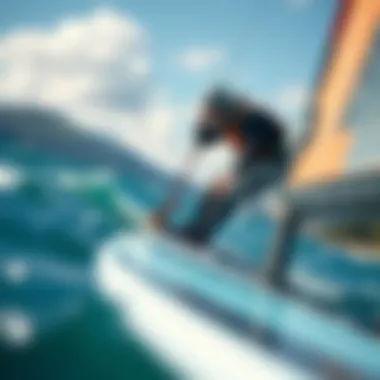
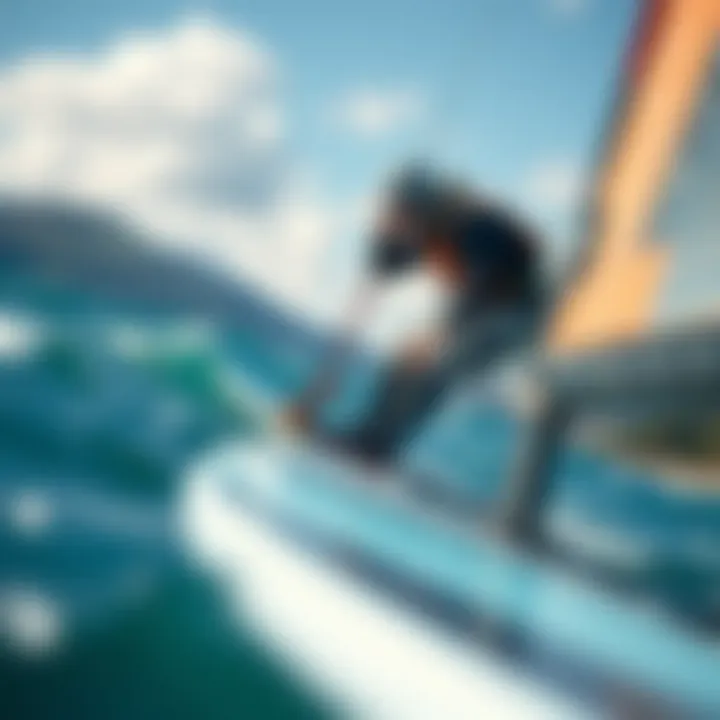
One standout feature of these events is their ability to foster friendships. Participants often form bonds that outlast the competition itself. Additionally, these gatherings increase visibility and interest in wing foiling, helping educate newcomers while promoting local businesses and tourism. It’s a win-win situation for everyone involved.
However, organizing such events comes with challenges as well. Regulations and permits can slow down the process, and weather conditions are unpredictable, leaving organizers scraping their heads. But when everything aligns, these festivals create experiences that are hard to rival.
Building a Local Wing Foiling Community
Creating a local wing foiling community is integral to the sport's growth. It provides a support network for newcomers who might feel overwhelmed by all the gear and techniques. Community groups often host regular meetups to practice and learn from each other. A key characteristic of these groups is their inclusiveness, making it easier for people of all skill levels to join in.
Local meetups often serve as breeding grounds for informal mentorship, with experienced riders sharing tips and tricks about equipment handling and best practices. This encourages a culture where seasoned members give back, enriching the entire community. Plus, organizing events at a local level can often lead to involvement from local businesses, helping boost the economy.
However, building a community requires effort. Time and commitment from members are essential. Despite the challenges, the benefits far outweigh the drawbacks, creating a vibrant, interconnected group of wing foiling aficionados.
Environmental Considerations
Reduce, Reuse, Recycle
As wing foiling continues to expand, its environmental impact becomes an important concern. Adhering to the principles of 'reduce, reuse, recycle' is crucial. This means being conscious about gear purchases and lifecycle management. For example, riders can prolong the life of their equipment through proper maintenance and occasionally looking into repurposing older gear.
A unique aspect of this approach is its potential to foster a sustainable culture within the sport. Engaging in initiatives to clean up event locations also promotes awareness about environmental stewardship among participants, creating a sense of responsibility towards the ecosystem.
On the downside, convincing everyone to adhere to these principles can be a tough nut to crack. People may resist due to perceived inconveniences, but educational efforts and workshops can change that mindset over time.
Responsible Riding Practices
Responsible riding practices play a vital role in shaping how wing foiling is perceived in the broader watersports community. Riders are encouraged to follow guidelines that prioritize safety and eco-friendliness. For instance, understanding the local environment and adhering to navigation rules can greatly minimize risks and liabilities.
A standout feature of responsible riding is its emphasis on preservation. Riders can engage in practices that reduce noise pollution and disturbance to wildlife, promoting a harmonious relationship with nature. In time, recognizing these practices contributes to the longevity of wing foiling as an accepted sport.
Still, adhering to responsible practices isn't always straightforward for everyone. Riders might get caught up in the excitement and make impulsive decisions, but ongoing education can help mitigate those risks. It’s about cultivating awareness and embedding these norms into everyday riding behavior.
"Sustainability isn’t merely an option; it’s a necessity in today’s adventure sports. Riders must take charge to protect our valued waters and landscapes."
Overall, the impact wing foiling has on watersport culture is significant. From fostering communities and encouraging participation to prioritizing sustainability, it’s clear that this sport is not just about riding waves; it’s about building connections and creating a legacy for future generations.
Care and Maintenance of Gear
When it comes to wing foiling, having the right gear is only half the battle. For those who truly want to enjoy their time on the water, understanding proper care and maintenance of gear is vital. The durability and functionality of equipment directly correlate to how well one can perform, as well as maintain safety while enjoying the sport. A well-maintained setup will not only ensure better experiences but also save money in the long run by minimizing wear and tear.
Cleaning Procedures
Proper cleaning is essential after each session on the water. Saltwater, dirt, and sand can wreak havoc on the materials used in wing foiling equipment. Here are some steps to effectively clean your gear:
- Rinse Immediately: Right after coming ashore, rinse your wings, board, and foil with fresh water. This helps remove salt and grit that can erode surfaces over time.
- Mild Soap Solution: For a deeper clean, use a mixture of water and mild soap. Avoid harsh chemicals as they can degrade the material. Simply dampen a non-abrasive cloth in the solution and wipe down all the components.
- Dry Thoroughly: After rinsing, ensure everything is dried properly to prevent mold and mildew. Leave them in a well-ventilated area, out of direct sunlight to avoid heat damage.
- Inspect for Damage: Regularly check for any signs of wear or damage. Addressing any issues on the spot can save you a lot of hassle later.
Keeping your gear clean is more than just basic care; it’s an investment in your enjoyment of the sport.
Storage Techniques
How you store your gear can significantly impact its longevity. Without proper storage, even the best equipment can degrade or become damaged over time. Here are some recommended storage practices:
- Cool, Dry Place: Store your wings and boards in a cool, dry place. Avoid damp garages or attics, where humidity can accumulate and cause harm.
- Use Protective Covers: When storing your wings, use a protective cover to guard against dust and potential scratches. It’s a simple step that can prolong its lifespan.
- Lay Flat: When possible, lay your board flat. Store it away from heavy objects that could press on it and cause warping.
- Keep Foils Off the Ground: For foil systems, keep them elevated to avoid getting scratched or damaged. A dedicated rack can help keep everything organized and protected.
Using these care and storage techniques ensures that every session on the water is as enjoyable as it can be. No one wants to be caught with frayed lines or a broken board halfway through their ride, after all. Whether you're a seasoned rider or just starting, remembering to care for your gear properly will enhance both performance and safety.
Culmination
As we wrap up this guide, it's crucial to reflect on the nuances of wing foiling packages and their significance to enthusiasts at every skill level. The journey through selecting, understanding, and maintaining gear can feel overwhelming at times, yet it is immensely rewarding.
Recap of Key Points
This article covered several fundamental aspects:
- Components of Wing Foiling Packages: We discussed essential elements including wings, boards, and foil systems, highlighting how each contributes to performance and enjoyment on the water.
- Selecting the Right Package: It’s imperative to consider individual skill levels, brand options, and whether to go for package deals versus piecemeal purchasing.
- Accessories and Safety Gear: Safety always comes first. The importance of appropriate gear, such as wetsuits, helmets, and storage solutions cannot be overstated. This is especially pertinent given the diverse conditions one might face while wing foiling.
- Environmental Awareness: As participants in the watersport community, understanding our impact and promoting responsible practices will ensure that wing foiling remains a viable sport for future generations.
- Care and Maintenance: Proper care extends the lifespan of the equipment and enhances performance, which in turn relates to overall enjoyment.
Future of Wing Foiling
The future of wing foiling looks bright and is undoubtedly evolving. As technology advances, we can expect to see more innovative designs that offer improved functionality and performance. Also, the rise in popularity of wing foiling among younger enthusiasts is fostering an inclusive culture around the sport.
Growth in community events, competitions, and local meetups promotes camaraderie and shared passion while nurturing a sense of responsibility towards our environment. The integration of digital platforms for training and sharing experiences also opens new avenues for skill development and connection among riders globally.















